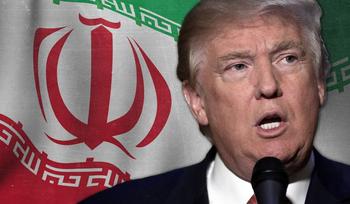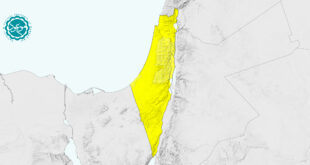US President Donald Trump and his top officials have continued their Iranophobic outbursts but have been unable to take any action against Iran.
Recently, Trump said on Twitter that Iran was “playing with fire” and announced fresh sanctions on the country after saying “nothing is off the table” in dealing with Iran.
Thunderous threats by Trump administration against Iran have not gone beyond outbursts with Washington finding it increasingly difficult to actualize its threats as the reality of global geopolitics sinks in.
There are several reasons why the US is unable to launch a war or even limited military action against Iran.
Lack of global consensus
First, it is impossible for the US to obtain a global consensus to launch any military strike against Iran. The current and previous US administrations have been attempting to imply that Iran’s ballistic missile program violates UN Security Council Resolution 2231. Iran maintains that its missiles are not designed to be capable of carrying nuclear warheads, and that it is not involved in such missile work, which is prohibited by the Resolution. Russia has also said that ballistic missile tests by Iran does not contravene a United Nations resolution on Tehran’s nuclear program, after the US requested emergency UN consultations.
Overstretched military
Secondly, an overstretched US military lacks the capacity and capability to launch a military strike against Iran. An understaffed US military is struggling to retain troops after engaging in years of occupation operations in Iraq and Afghanistan. Current US commitments exceed its capabilities and this is the major reason Trump has demanded US allies in NATO to allocate more budgets to their militaries as Washington cannot foot the bill. Furthermore, with new tensions in Sino-US ties Washington has expanded its military presence in the Asia Pacific as it shifts its military hardware from the West Asia region.
Weakened Economy
The US economy plunged into a recession during Obama’s administration because of the colossal costs of managing two wars. Since the 9/11 attacks, the US has used $3.2 trillion in its wars, according to a new study conducted by Brown University’s Watson Institute for International and Public Affairs. Additionally, with spending obligations to veterans over the next four decades, the total increases to nearly $4.8 trillion in 2017.
Therefor the existing economic realities prevent the US from launching any military move against an emerging global power such as Iran.
Polarized America
The Trump administration is already facing questions of legitimacy with many Americans saying the current White House occupant is not representative of the majority as he lost the popular vote and is in office following his selection by some of its 538 members. Therefore, Washington is incapable of rallying a polarized American to support a war on Iran.
Iran’s options deter US attack
Meanwhile Iran’s options and possible response to a US military attack worry many experts who warn that such a conflict could flare-up across the region and beyond with Washington being unable to control the outcome of such an escalation.
A former US Defense Intelligence Agency (DIA) analyst Jeffery White in an analysis on how a US strike on Iran would play out writes: “While a war with Iran might begin in the military domain, it would likely expand to others, and while it might begin at the operational or tactical level it would soon encompass strategic and political levels as well”. Military affairs experts believe Iran’s strategy of asymmetric warfare would deal a devastating blow to the giant US army. Indeed, Iran’s superiority in asymmetric warfare has acted as a deterrence to US military adventurism.
Trump’s pledges
Speaking in December, Trump stated that instead of investing in wars, he said, he would spend money to build up America’s aging roads, bridges and airports. Thus launching a war with a formidable foe such as Iran would imply that he would be unable to fulfill his pledges to Americans.
Iranians united
Internally, any military action by the US against Iran would further unite and galvanize Iranians around the Islamic establishment and completely isolate the few elements seen to be leaning towards Washington.
Trump’s profit and loss view of Iran
Considering the foregoing, would Trump still continue his belligerent anti-Iran rhetoric? In answering this question, one has to look at Trump’s foreign policy approach which is based on a trader’s outlook of making maximum profits and avoiding losses. The American president views the Iran nuclear deal signed between Tehran and six world powers, US included, as an agreement benefitting Iran financially while imposing financial losses on Washington. Therefore, the Iranophobic rhetoric by Trump is not geared towards a military buildup but rather a ploy meant to weaken global consensus on the deal known as The Joint Comprehensive Plan of Action (JCPOA). Any US withdrawal from the deal will imply Trump’s further isolation and place him on a collision course with its allies.
 Mouood Mouood English Edition
Mouood Mouood English Edition




